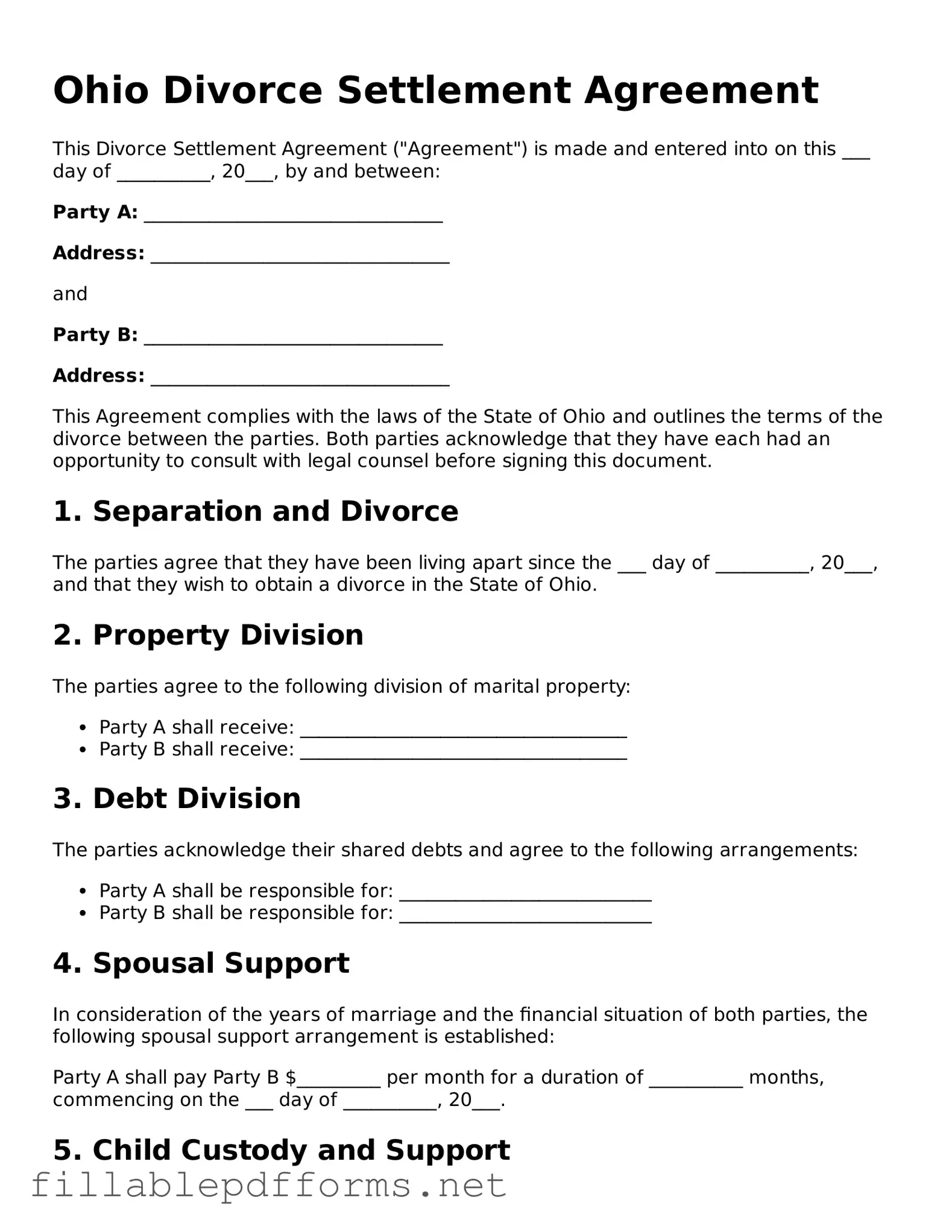Attorney-Verified Divorce Settlement Agreement Form for Ohio State
The Ohio Divorce Settlement Agreement form is a legal document that outlines the terms of a divorce between two parties. It addresses key issues such as asset division, child custody, and support obligations. This form serves to ensure that both parties have a clear understanding of their rights and responsibilities post-divorce.
Launch Editor Here
